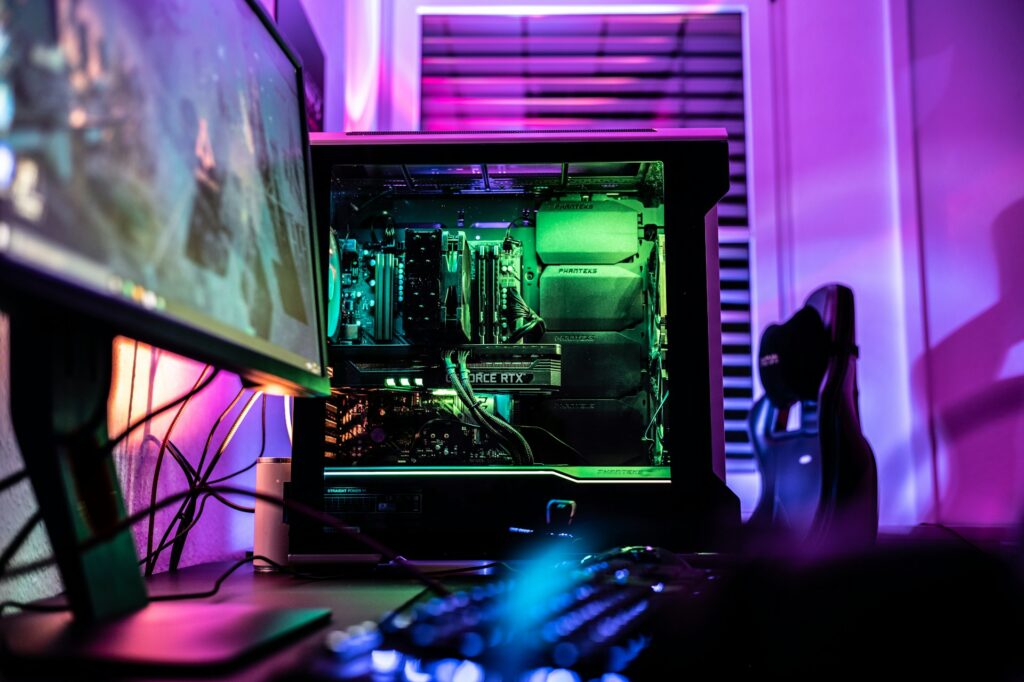If you want to repair or build a computer — or if you’re merely interested in the basics of how they work — hardware is just as important as software. The exact parts used will vary from machine to machine. However, there are a few necessary components you’ll find in each one. Here are the 4 main parts of a computer you should know about.
1. Motherboard
The motherboard is kind of like the control center for a computer. It coordinates all activity between different components. It’s a sophisticated printed circuit board (PCB) that acts as a gateway between the CPU, hard drive, video cards, CD drives and other computer peripherals. It also distributes power to these components from the power supply unit (PSU).
All motherboards have sockets for necessary computer components and typically come with ports for other essential devices. For example, your motherboard almost certainly has an audio header that connects to the audio jack on your device’s case. This header allows you to receive sound from the rest of your computer when you plug an audio device in.
The motherboard is also home to your computer’s BIOS, or Basic Input/Output System. This system manages startup processes and facilitates communication between your operating system and hardware. Out of all 4 main parts of a computer, this part is arguably the most important.
2. Memory (RAM)
Computer memory is distinct from storage. This memory is stored on memory sticks, called RAM (random access memory) sticks. When your computer needs to temporarily hang on to some data but doesn’t need long-term storage, it uses RAM. Unlike a hard drive, when your RAM loses power, it effectively resets, “forgetting” everything stored on it. If you prioritize any of these 4 main parts of a computer, RAM should be your go-to.
Like most other words for computer hardware, RAM is a catch-all term, and there are a few different types of memory available. Most newer computers use DDR4 SDRAM, a kind of synchronous dynamic random-access memory designed to handle the transfer of lots of data at the same time. Some video cards also come with VRAM, or video RAM, which is memory available on the card itself.
3. Storage (Hard Disk/HDD/SSD)
Storage is how your computer remembers things. Every file you save is recorded as data and stored on your computer’s drive as a series of 1s and 0s. When you need to access this information, your computer will “read” it from your drive. Unlike RAM, this disk is non-volatile storage and will hold onto information even when powered down.
Most older computers rely on hard disk drives (HDDs). These drives store and read information off a physical disk, called a platter, using magnetic read/write heads. Some newer computers use solid state drives (SSDs), which are closer to RAM in how they read and write memory. These drives can store and access information are typically more reliable and much faster than HDDs. They’re also usually more expensive.
4. Processor (CPU)
A computer’s central processing unit (CPU) conducts hundreds of arithmetical, input/output and logical operations to execute the commands of software. Every program you’ve ever run has relied on a CPU in one way or another. To perform these commands, the CPU works with your computer’s memory and storage — the RAM and drive — to fetch both the instructions it will follow and the data it will use.
In the past, these instructions were carried out on just one processing unit, or “core.” Modern CPUs typically have anywhere between two and eighteen of these cores, each of which can work on a different task at a time. Typically, the more cores you have, the more the part costs. Either way, a CPU is usually the most expensive option out of any of the 4 main parts of a computer.
Some of the newest CPUs have a significantly higher number of cores — up to 64 with a cutting-edge processor. Just a handful of consumer-grade computers will have that kind of processing power, though.
The 4 Main Parts of a Computer Are Absolutely Essential
There are other components you need to get a computer running — without the right power supply unit (PSU), for example, none of these 4 main parts of a computer will work. However, the motherboard, CPU, RAM and storage are the main parts. By understanding these elements, you can adequately sum up how a computer works.
Recent Stories
Follow Us On
Get the latest tech stories and news in seconds!
Sign up for our newsletter below to receive updates about technology trends














